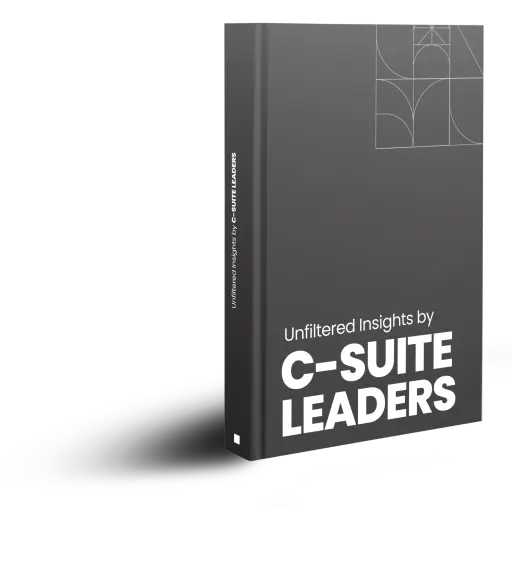
Ever wondered what drives businesses to dedicate such a large share of their marketing budgets? It’s all about customer acquisition, the ultimate objective of every marketing effort. From organic strategies to paid campaigns, the goal is to attract new customers and drive sales growth.
Given its importance, many industries invest heavily in customer acquisition strategies. Let’s dive into the customer acquisition costs (CAC) for top industries.
| Industry | Organic CAC | Inorganic CAC | Combined Average CAC |
| Aerospace & Defense | $526 | $918 | $624 |
| Automotive | $491 | $893 | $592 |
| B2B SaaS | $205 | $341 | $239 |
| Financial Services | $644 | $1,202 | $784 |
| Manufacturing | $662 | $905 | $723 |
| Real Estate | $660 | $1,185 | $791 |
This table clearly states that businesses are spending more on inorganic custom acquisition methods like ads than organic methods.
But unfortunately, after spending millions on customer acquisition, companies aren’t still able to acquire new customers easily. Several factors contribute to this difficulty:
Declining Trust in Advertisements: A study revealed that only 23% of consumers trust ads from influencers, highlighting a general skepticism towards advertising content.
Pre-Purchase Research: Approximately 81% of consumers conduct online research before making a purchase, indicating that buyers are well-informed and deliberate in their decision-making process.
Demand for Personalized Experiences: Modern consumers expect personalized interactions and solutions tailored to their specific needs. Brands that fail to provide such experiences may struggle to convert potential customers.
In short, digital age customers are changing. They don’t get swayed by the charming ads. In fact, they believe in doing thorough research before buying anything. And then, they only buy from the brand that offers them personalized solutions.
This means your traditional customer acquisition marketing strategies are obsolete today. Therefore, you need to revamp your customer acquisition process to gain maximum output.
And that is what we will discuss today. This post will help you recharge your product marketing strategies to meet modern customer needs. Let’s dig in.
7 Ways to Get Maximum ROI from Customer Acquisition Marketing
Customer acquisition is the whole process of walking a stranger to your sales funnel and converting them to your customer. Thus, it is vital to design your customer acquisition marketing strategies to acquire more customers on a small budget.
Here’s how you should empower your customer acquisition marketing efforts:
1. It’s Time for You to Start Collecting Intent Data
Without a doubt intent data has become a pillar for customer acquisition strategies as it allows businesses to understand and anticipate customer needs more effectively. A Forrester study of 2023, it says around 70% of companies use intent data, leverage multiple providers.
Intent data provides insights into prospect’s online behavior as it reveals their interests and willingness to make a purchase. Companies can use this information to craft personalized marketing efforts for better customer interactions.
To harness the power of intent data, businesses are increasingly turning to advanced tools designed for this purpose. Some of the top intent data tools in 2025 include:
- UnboundB2B: Offers end-to-end solutions and identify unique buyer journeys and deliver qualified leads, including Marketing-Qualified Leads (MQLs), High-Quality Leads (HQLs), and Sales-Qualified Leads (SQLs). With a 100% pay-for-performance model, they help B2B companies shorten sales cycles and maximize ROI on marketing spend.
- ZoomInfo: Offers comprehensive B2B contact and company data, enriched with intent signals to identify prospects actively researching products or services.
- Leadfeeder: Identifies companies visiting your website, providing insights into their behavior and intent, which helps in tailoring outreach efforts.
- 6sense: Utilizes AI to predict buying intent by analyzing a range of data points, enabling sales and marketing teams to focus on the most promising leads.
- Bombora: Aggregates intent data from various sources to provide insights into which companies are actively researching topics related to your offerings.
- Demandbase: Combines intent data with account-based marketing strategies to help businesses engage with high-value accounts showing purchase intent.
2. Define Your Targeted Audience
Once you have gathered user intent data, the next step should be to define and refine the audience. Start the process by identifying the individuals that resonates well with most of your products or services. Simple identification of audience isn’t enough, one should delve deeper in segmenting them into smaller, more defined groups.
It is very important for you to segment your audience based on factors such as industry, company size, job title, location, behavior, and specific pain points.
For example, if you’re a B2B SaaS company offering marketing automation software, you might segment your audience into small businesses looking to streamline email campaigns, mid-sized companies seeking omnichannel marketing solutions, and large enterprises focused on AI-driven analytics. With such segmentation, you can create personalized campaigns tailored to the unique challenges and needs of each group.
This personalized approach not only boosts engagement but also optimizes your resources. For instance, instead of sending a generic email blast to a wide audience, you could send highly targeted content to marketing managers at mid-sized companies, highlighting how your software reduces manual workload and improves ROI. This focused targeting results in significantly higher customer acquisition rates and a more efficient use of your marketing budget.
Understanding of prioritizing audience segmentation and personalization can help you ensure your customer acquisition strategies resonate deeply with the right prospects, ultimately driving better results and accelerating business growth.
3. Find The Right Customer Acquisition Channel
In this digital age, you have several marketing channels in your hand to acquire new customers, such as:
- Email marketing
- Digital ads
- Social media marketing and many more.
For instance, email marketing continues to be a highly effective strategy, delivering an average ROI of $36 for every dollar spent.
On the other hand, organic reach on social media platforms has been declining, with some platforms experiencing rates as low as 0.07%. LinkedIn’s organic reach for B2B content is 2.2%.
This contrast underscores the importance of selecting the right marketing channels to optimize customer acquisition efforts. But, the question here is – which customer acquisition marketing channel is ideal for you?
Many factors impact your selection of the right marketing channel, such as:
- Industry
- Products or services
- Customer interest, etc.
Let’s take the example of HubSpot and Dropbox. Both brands have a similar customer base of professionals and B2B clients. But still, the same customer acquisition channel doesn’t work for them.
HubSpot gains its maximum users from organic reach. They target relevant keywords, use social media and other organic channels to grow their business.
In contrast, organic stuff didn’t work for Dropbox. In the early days, most Dropbox growth came from its referral program.
Therefore, you should first explore all the relevant customer acquisition marketing channels and then only focus on the high result-driven ones.
4. Work On Harnessing Your Audience
Once a potential customer enters your customer acquisition loop, you have to nurture and harness them. And for that purpose, content marketing is the best option.
When you publish regular content on your website, you can build your online brand niche. People in your industry will start to recognize your brand. Getting recognition will further help you win consumers’ trust.
Content marketing can support your customer acquisition process at every step, for instance:
- Content can make people familiar with your brand
- By publishing informative blogs, you can drive potential users your way
- The regular content publication will keep your audience engaged
Finally, the content will motivate users to buy from your site
In short, content marketing will drive, retain and convert your customers with ease. Additionally, content marketing is the cheapest method to acquire new customers. And we all know content is the perfect place to embed SEO keywords and outbound links.
All you need is a good copywriter, and you can quickly fuel your customer acquisition marketing with well-written content.
5. Visually Stimulate Your Customer
Incorporating video marketing into your customer acquisition strategy is essential. Recent data indicates that by 2025, 82% of global internet traffic will be attributed to video content.
Additionally, approximately 65% of individuals are visual learners, meaning they process and retain information more effectively when it’s presented visually.
With use of engaging video content, you can effectively capture attention and convey your brand’s message, thereby enhancing your customer acquisition efforts.
However, if you have no clue how to use video marketing to acquire new customers, here are a few ideas for you:
- Replace your boring product explanation video with animated videos
- Share testimonials and customers feedback in video format
- Create how-to videos to provide value to your customers
- Behind the scene, videos are perfect for social engagement and earning customer’s trust
- Q&A-style videos are also great to inform and motivate customers, etc.
6. Work On Engaging Your Audience
Today, lead generation is the simplest part of the customer acquisition marketing process. You can simply run some Google Ads, and people will get to know your brand. In fact, many will click on your ad. But, what after that?
Google’s algorithm can only help your ad pop up on your target audience’s search results. But it can’t motivate them to take action and stay connected with your brand. For this, you have to use your buyer’s intent data and creativity to keep your leads engaged.
Today, brands are using various methods to engage their audience, such as:
Games and Rewards
Games and rewards resonate well with audiences, and they can be a powerful tool in B2B customer engagement and acquisition. Organizing contests or gamified activities specifically tailored for B2B clients or employees can foster stronger relationships while promoting your products or services effectively.
For example, Trailhead by Salesforce is an excellent B2B example. It’s an online learning platform where participants earn points, badges, and sometimes tangible rewards like Trailblazer hoodies or Slackstro plushies. This gamified approach not only attracts users but also enhances their knowledge of Salesforce’s ecosystem, turning them into engaged and informed customers.
Here are some gamification ideas tailored for the B2B sector:
- Salesperson of the Month Contest: Encourage internal sales teams by rewarding top performers with recognition and gifts.
- Spin the Wheel for Clients: Allow customers or partners to win discounts, free trials, or consultations with each spin.
- Customer Review Challenge: Incentivize existing clients to leave thoughtful reviews or testimonials, offering gift cards or product credits as rewards.
- Lead Conversion Competition: Create a contest among sales or marketing teams to see who closes the most qualified leads within a specific timeframe.
- Free Tools and Resources: Launch an educational contest where customers gain access to free marketing tools, reports, or certifications and earn rewards for completing certain activities.
7. Give a Final Push to Your Audience
Once you have harnessed, nurtured, and engaged your audience, now you have to give them a final push to purchase. For this, you need a fully optimized landing page.
All your content, videos, and ads are medium to drive leads to your landing page. This page is the final step in the customer acquisition process. Thus, make sure to create a stunning landing page.
Here are a few tips for developing a result-driven landing page:
- Make your products or services standout
- Simplify landing page layout
- Try contrasting colors
- Highlight the important features
- Keep the CTA bold and clear
- Create a catchy headline
- SEO-optimize the landing page content, etc.
- Sum Up Customer Acquisition Marketing Process
Conclusion
Customer acquisition marketing is a complete process of turning a stranger into your customer. This one process includes lead generation, nurturing, and retention processes.
Thus, it is crucial to draft customer acquisition marketing strategies to drive maximum results.
Start your customer acquisition marketing journey by analyzing the buyer’s intent and then boost it with lead nurturing and engaging strategies. Just follow the right direction and you will easily get the most from your customer acquisition marketing.
So, the key takeaway here is to follow your leads till the end so they won’t leak from the sales funnel.
Our blog
Latest blog posts
Tool and strategies modern teams need to help their companies grow.

Running a business comes with its own set of challenges, especially when it comes to ...

AI is surely a futuristic concept but it evolves today, particularly in sales and mar...

A successful webinar requires more than just a great speaker and a compelling topic. ...







